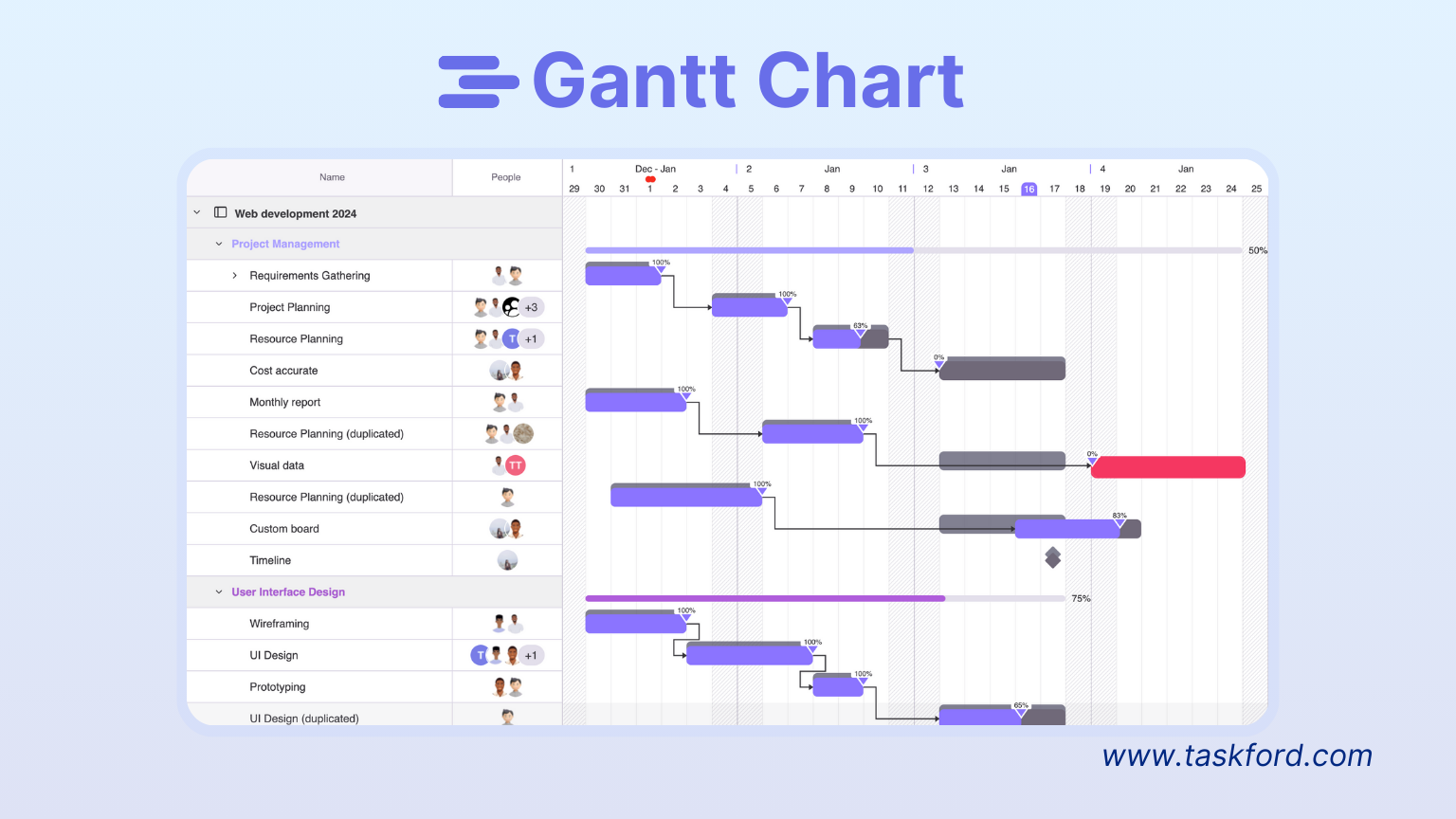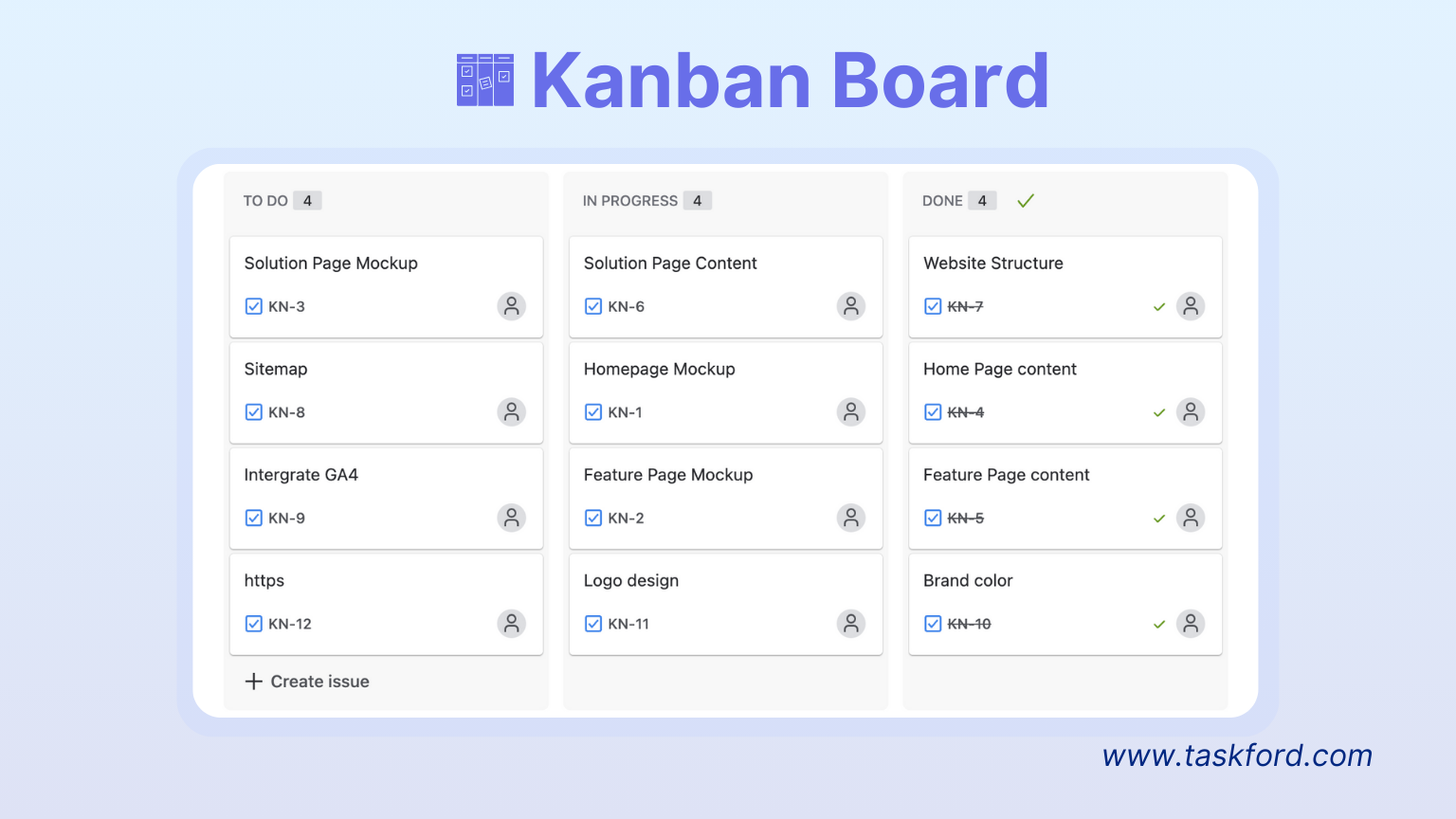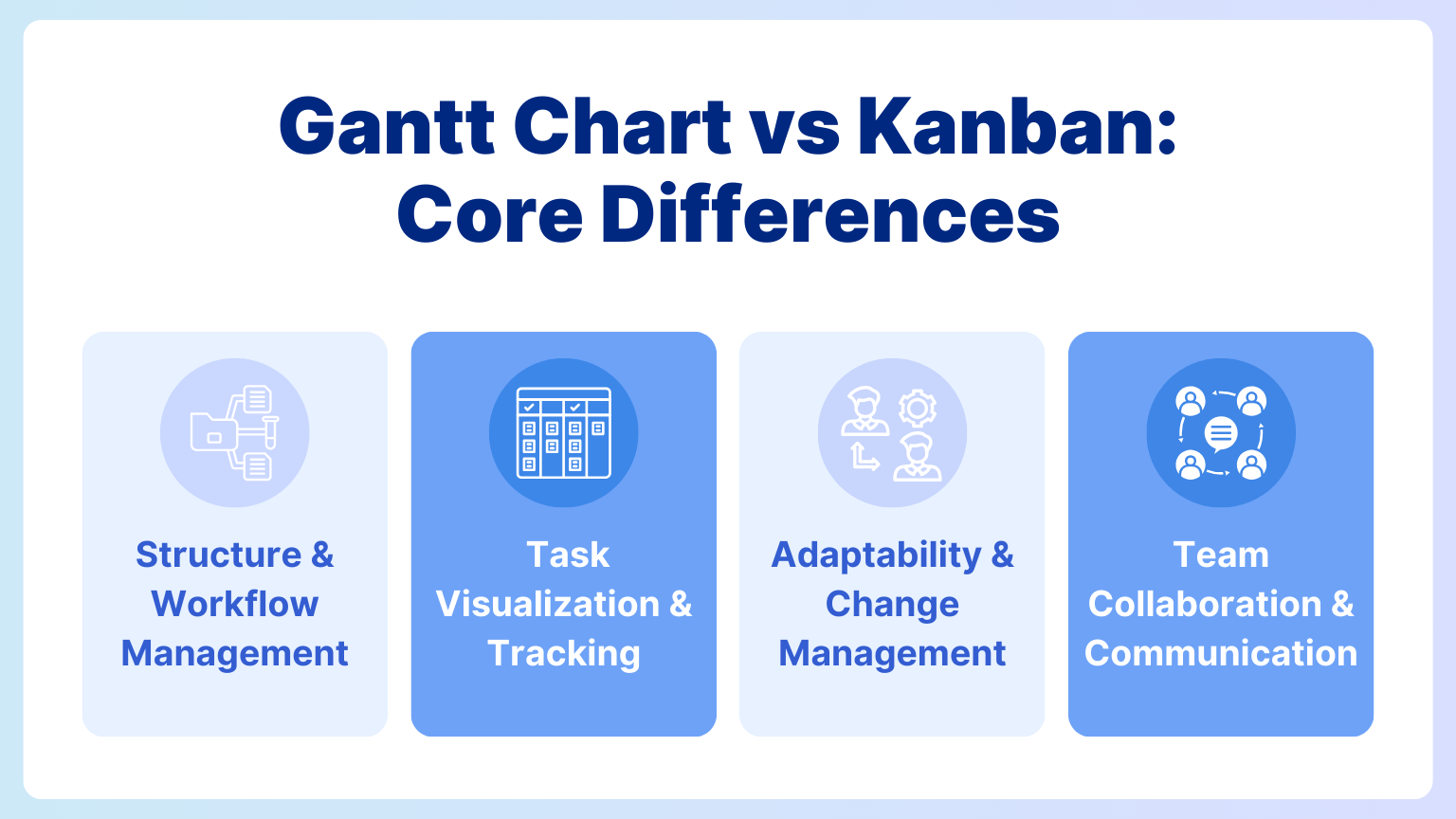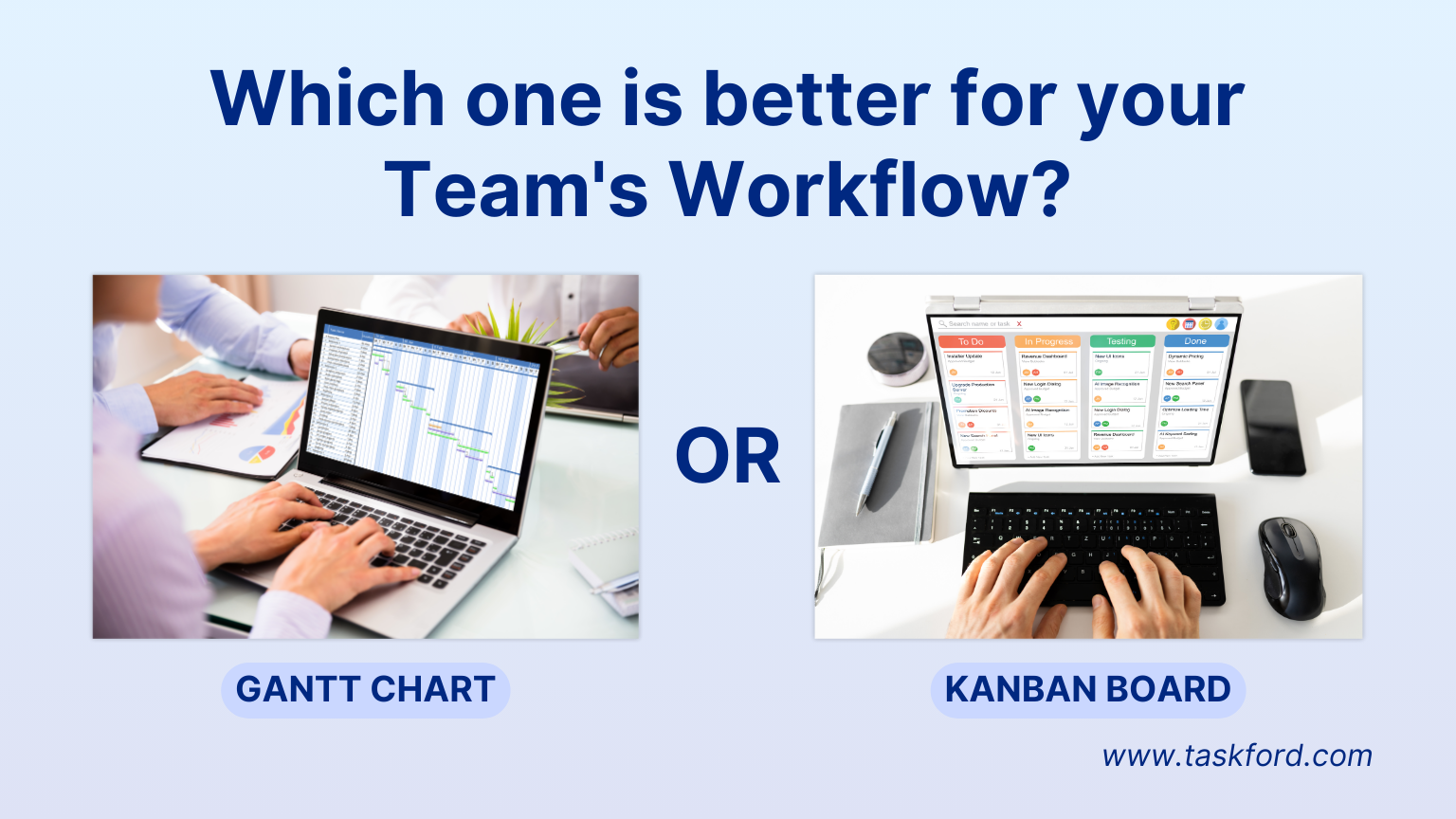Gantt Chart vs Kanban: Which one is better for your Team's Workflow
Compare the Gantt chart vs Kanban to find the best project management tool for your team. Explore key differences, pros, and best use cases.
When managing projects, the Gantt Chart vs Kanban is a common debate. Both tools help teams organize work, but they serve different needs. A Gantt chart is a timeline-based tool ideal for structured projects with deadlines, while a Kanban board focuses on workflow visualization and flexibility. Whether you’re in software development, marketing, or operations, choosing the right method impacts efficiency. In this guide, we’ll compare Gantt Chart vs Kanban head-to-head, exploring their pros, cons, and best use cases, so you can decide which one fits your team’s workflow best.
What is a Gantt Chart?
A Gantt Chart is a visual project management tool that helps teams plan, schedule, and track tasks over time. It displays tasks as horizontal bars on a timeline, showing start and end dates, dependencies, and progress. This method is widely used in construction projects, event planning, product development, and enterprise project management, where deadlines and task sequencing are critical.
With a Gantt chart, project managers can ensure that every task is aligned with the overall workflow structure, reducing bottlenecks and improving resource allocation.

Pros of Gantt Chart
- Clear Timeline & Task Dependencies: Provides a structured overview of project phases, helping teams understand task sequences. Great for long-term planning and deadline-driven workflows.
- Improved Resource Allocation: Managers can see who is working on what, preventing overburdening and ensuring efficient workload distribution.
- Milestone Tracking & Progress Monitoring: Helps track key milestones, ensuring that the project stays on course. Useful for executive reporting and stakeholder communication.
- Ideal for Waterfall Project Management: Best suited for industries that follow a sequential project structure.
Cons of Gantt Chart
- Rigid & Time-Consuming to Update: Changes in one task can impact multiple dependencies, making updates complex. Not ideal for agile teams that need frequent adjustments.
- Complexity in Large-Scale Projects: The more tasks and dependencies, the harder it is to manage. It can become visually overwhelming in enterprise-level projects.
- Lack of Real-Time Collaboration: Unlike Kanban boards, Gantt charts don’t always support real-time task updates, which can slow down decision-making.
Gantt Chart Example
Let’s say a marketing team is planning a product launch campaign. Using a Gantt chart, they can:
- Schedule tasks like content creation, social media promotion, email marketing, and influencer outreach.
- Assign dependencies, ensuring that blog posts are ready before paid ads go live.
- Set deadlines and monitor progress to meet the launch date.
This structured approach ensures that everything runs on schedule without missing deadlines.
What is a Kanban Board?
A Kanban board is a visual task management system that helps teams organize their workflow efficiently. It consists of columns (e.g., To-Do, In Progress, Done) where tasks move from left to right as they progress. Kanban is widely used in software development, agile project management, and content creation, where teams work in an iterative manner.
Kanban focuses on workflow optimization, reducing bottlenecks, and improving task visibility, making it ideal for teams that handle continuous workstreams.

Pros of Kanban
- Highly Flexible & Adaptable: Perfect for agile teams that need to shift priorities quickly. Supports continuous delivery and incremental progress.
- Real-Time Collaboration & Transparency: Everyone on the team can see task statuses instantly. Encourages better team communication and accountability.
- Optimizes Workflow Efficiency: Work-in-progress (WIP) limits prevent teams from multitasking too much. Helps identify and eliminate bottlenecks in real-time.
- Easy to Set Up & Use: Unlike Gantt charts, Kanban doesn’t require extensive planning - just add tasks and move them through the workflow.
Cons of Kanban
- Lacks Long-Term Planning Features: Doesn’t provide a clear timeline for complex projects. Not ideal for deadline-driven workflows.
- Difficult to Track Dependencies: Unlike Gantt charts, Kanban doesn’t show task relationships or milestones. Can be challenging for teams with highly interdependent tasks.
- Can Get Overcrowded: Without proper management, Kanban boards can become cluttered with too many tasks.
Kanban Example
A software development team working on a new app feature can use Kanban to:
- Create cards for design, coding, testing, and deployment.
- Assign team members to specific tasks and track progress.
- Adapt priorities based on bug fixes, feature requests, and feedback.
This agile-friendly approach allows teams to continuously refine and release updates without rigid deadlines.
Gantt Chart vs Kanban: Key Differences
Choosing between a Gantt chart and Kanban depends on your project’s structure, workflow, and flexibility needs. While both are powerful project management tools, they serve distinct purposes. A Gantt chart is best for structured, timeline-driven projects, whereas a Kanban board offers real-time task visualization and adaptability.
| Feature | Gantt Chart | Kanban Board |
|---|---|---|
| Best For | Large, structured projects with fixed deadlines (e.g., construction, event planning) | Agile workflows with continuous delivery (e.g., software development, customer support) |
| Workflow Type | Linear, phase-based | Flexible, iterative |
| Task Visualization | Timeline-based with dependencies | Card-based, drag-and-drop system |
| Flexibility | Rigid structure with predefined schedules | Highly adaptable with real-time updates |
| Collaboration | Best for teams working in sequential phases | Ideal for teams with concurrent tasks |
| Complexity | Can become overwhelming for large projects | Simple and intuitive, but lacks long-term planning features |
| Time Tracking | Includes milestone tracking & deadlines | Focuses on work-in-progress limits rather than deadlines |
| Best For Teams Like | Project managers, event planners, construction teams | Agile teams, developers, marketing teams |
What are the Core Differences Between Gantt charts and Kanban?

1. Structure & Workflow Management
- Gantt charts follow a linear, structured approach where tasks are dependent on previous milestones. This is great for project roadmaps, software releases, or product launches.
- Kanban boards focus on workflow agility, allowing teams to quickly reprioritize tasks without disrupting the entire project timeline. This works well for agile development, customer service, and content creation teams.
2. Task Visualization & Tracking
- A Gantt chart offers a visual timeline, showing dependencies, milestones, and due dates, ensuring that teams stick to schedules.
- Kanban uses a drag-and-drop board system, where tasks move through columns like “To-Do,” “In Progress,” and “Done.” It’s great for tracking work-in-progress (WIP) and optimizing task flow.
3. Adaptability & Change Management
- Kanban is more flexible—tasks can be reprioritized anytime without affecting the entire workflow.
- Gantt charts require careful planning because changes can impact dependencies and deadlines.
4. Team Collaboration & Communication
- Gantt charts are better for top-down project planning, where managers set deadlines and assign tasks.
- Kanban promotes continuous collaboration, allowing teams to work on multiple tasks simultaneously with minimal bottlenecks.
Gantt Chart vs Kanban: Which One Should Your Team Use?

Now that we’ve explored Gantt Chart vs Kanban, the next question is: Which one is the right fit for your team’s workflow? The answer depends on your project structure, team collaboration style, and work priorities.
Below, we’ll break it down based on team types and use cases.
When to Use Gantt Charts?
A Gantt Chart is ideal for teams that work with fixed deadlines, milestones, and dependencies. It helps in long-term project planning where tasks need to be completed in a sequential order.
Best for:
- Construction & Engineering Teams – Track project phases, materials, and dependencies.
- Event Planners – Manage logistics, vendor coordination, and marketing schedules.
- Product Development Teams – Align R&D, testing, and manufacturing with set launch dates.
- Corporate Project Management – Organize large-scale business initiatives with multiple stakeholders.
When to Choose Gantt: If your project has a clear start and end date, fixed scope, and requires milestone tracking, a Gantt chart will ensure that everything stays on schedule.
When to Use Kanban?
A Kanban board is best for agile teams that work on an ongoing basis, adapting to changing priorities. It allows real-time collaboration and focuses on improving workflow efficiency.
Best for:
- Software Development Teams – Manage agile sprints, feature updates, and bug tracking.
- Marketing Teams – Handle content creation, social media campaigns, and ad scheduling.
- Customer Support Teams – Track tickets, prioritize urgent requests, and resolve issues faster.
- Agile Operations Teams – Manage continuous delivery pipelines, DevOps workflows, and IT processes.
When to Choose Kanban: If your team thrives in an agile environment with ongoing tasks and frequent changes, Kanban provides real-time visibility and better adaptability.
When to Use Both Gantt charts and Kanban?
For some teams, a combination of Gantt and Kanban provides the best of both worlds. You can use Gantt charts for long-term planning and Kanban for daily task execution.
How They Complement Each Other:
- Project Roadmap (Gantt) + Agile Task Execution (Kanban): A Gantt chart outlines major project milestones, while a Kanban board tracks daily progress in an agile manner.
- Top-Down Planning + Bottom-Up Execution: Managers can use Gantt charts to set strategic deadlines, while teams use Kanban to manage workload distribution dynamically.
- Cross-Team Collaboration: A marketing team might plan a product launch with Gantt charts, while their content team executes campaigns using Kanban.
Best for:
- Hybrid Project Teams – Teams handling both structured planning and real-time execution.
- Enterprise Teams – Organizations that need high-level strategic planning with agile task workflows.
- Software & Product Teams – Using Gantt for release roadmaps and Kanban for sprint planning.
Conclusion
When comparing Gantt Chart vs Kanban, the choice depends on your project needs. Gantt charts excel in structured, deadline-driven projects, while Kanban offers flexibility for agile workflows. Some teams benefit from a hybrid approach, using Gantt for planning and Kanban for execution. Ultimately, selecting the right tool ensures better productivity and workflow management.
Subscribe for Expert Tips
Unlock expert insights and stay ahead with TaskFord. Sign up now to receive valuable tips, strategies, and updates directly in your inbox.